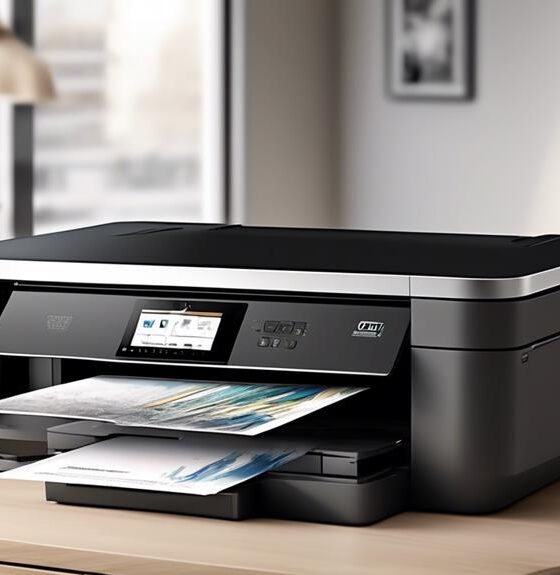Retreat
How Do I Turn My House Into a Spa

Picture turning your modest home into an opulent spa sanctuary, where each corner holds the promise of relaxation and renewal.
In this article, we will guide you through the process of turning your house into a spa haven. From choosing the perfect scents and essential oils to creating a serene ambiance with lighting, we’ll show you how to design a space that evokes tranquility and indulgence.
Get ready to elevate your home to new levels of comfort and innovation. Let’s dive in!
Key Takeaways
- Consider personal preferences and desired effects when choosing scents and essential oils for aromatherapy
- Use dimmable lights with soft, warm tones to create a soothing ambiance
- Incorporate soothing scents and indulgent bath products to enhance the bathing experience
- Design a serene meditation corner with calming colors, natural elements, and minimal distractions
Choosing the Right Scents and Essential Oils
As we explore how to turn our house into a spa, let’s discuss the importance of choosing the right scents and essential oils. Aromatherapy benefits can greatly enhance the spa experience, promoting relaxation and rejuvenation. When it comes to selecting scents, it’s crucial to consider personal preferences and desired effects. Lavender, for example, is well-known for its calming properties, while citrus scents can uplift and energize.
Essential oils can be used in various ways, but one popular option is through diffusers. These devices disperse the scents into the air, creating a soothing atmosphere throughout the house. With diffuser options ranging from ultrasonic to nebulizing, there’s something to suit every preference.
Now that we’ve explored the importance of scents and essential oils, let’s move on to creating a relaxing ambiance with lighting.
Creating a Relaxing Ambiance With Lighting
Let’s enhance our spa-like atmosphere by using dimmable lights to create a soothing ambiance throughout the house. Lighting plays a crucial role in setting the mood and creating a relaxing environment. By installing dimmable fixtures, you can easily adjust the intensity of the lights to suit your desired atmosphere.
To further enhance the spa experience, consider incorporating mood enhancing colors into your lighting scheme. Soft, warm tones like amber, lavender, and pale blue can create a calming effect and promote relaxation. Experiment with different combinations and intensities to find the perfect balance for your space.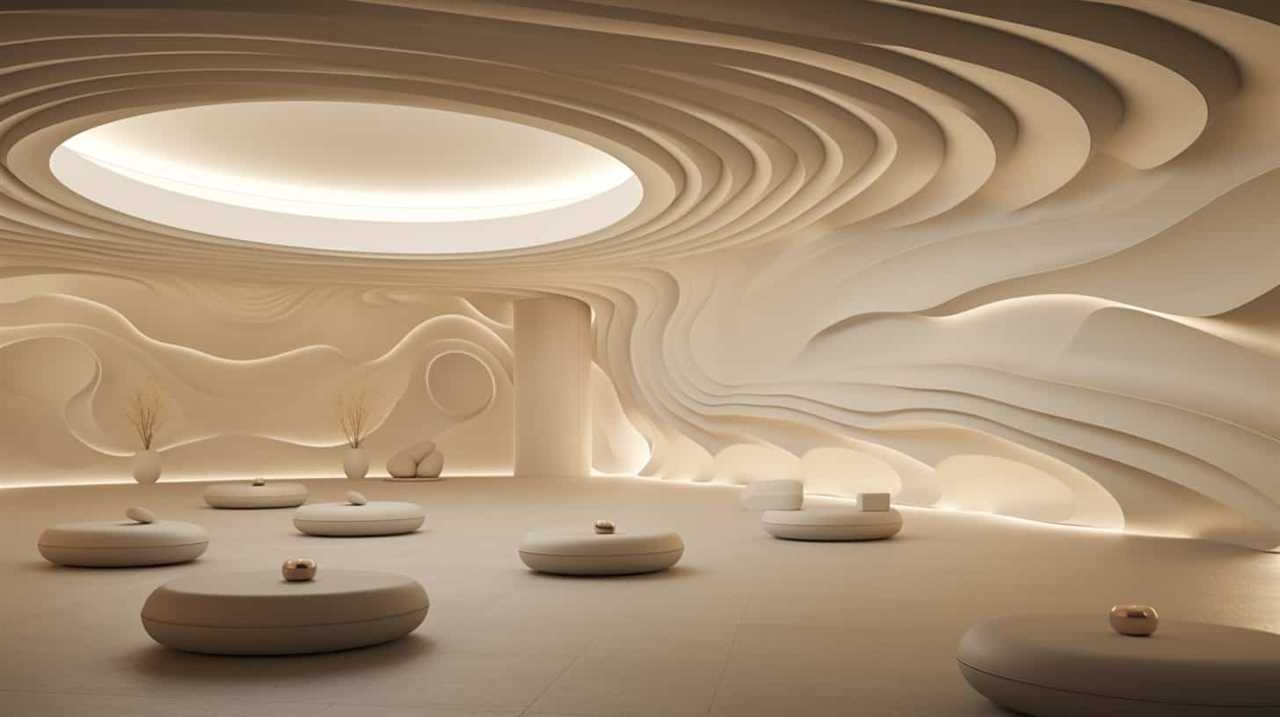
Whether it’s a tranquil bathroom or a serene bedroom, the right lighting can transform your home into a sanctuary of relaxation and rejuvenation.
Setting Up a Luxurious Bathing Experience
We can create a luxurious bathing experience by incorporating soothing scents and indulgent bath products.
To enhance the relaxation and indulgence, why not try making your own bath bombs or DIY bath salt blends?
Bath bombs are a popular trend in the world of self-care, and they can be easily made at home using simple ingredients like baking soda, citric acid, and essential oils. These fizzy creations not only add a touch of luxury to your bathing routine but also release pleasant scents and moisturize your skin.
On the other hand, DIY bath salt blends allow you to customize your bathing experience by combining different types of salts, such as Epsom salt and Himalayan salt, with your favorite essential oils. The result is a personalized and rejuvenating soak that will leave you feeling pampered and refreshed.
Designing a Serene Meditation Corner
Our goal is to create a peaceful and calming atmosphere in our home by designing a serene meditation corner.
Here are four essential elements to consider:
Creating a calming color palette: Choose soft, muted colors like blues, greens, or neutrals that promote relaxation and tranquility. Avoid bright or stimulating colors that could distract from the meditation experience.

Selecting comfortable meditation cushions: Opt for cushions or pillows that provide adequate support and comfort during meditation. Look for ones made from natural materials like cotton or buckwheat hulls, as they offer a more grounding and soothing experience.
Adding natural elements: Integrate elements from nature, such as plants, stones, or a small water feature, to enhance the calming ambiance. These natural elements can help create a sense of connection with the environment and promote mindfulness.
Creating a clutter-free space: Keep the meditation corner clean and free from unnecessary distractions. Declutter the area and only include essential items that promote relaxation and focus.
Incorporating Spa-inspired Decor and Accessories
We can enhance the spa-like atmosphere in our home by incorporating spa-inspired decor and accessories.
One way to do this is by incorporating natural materials into our design. Opt for furniture made from sustainable wood or bamboo, and choose accessories like woven baskets and stone sculptures. These natural elements will bring a sense of tranquility and harmony to our space.
Another important aspect to consider is the color palette. Creating a soothing color palette is essential in creating a spa-like environment. Choose soft, calming colors such as blues, greens, and neutrals. These colors have a calming effect and will help us relax and unwind.
Frequently Asked Questions
How Do I Choose the Right Scents and Essential Oils for My Home Spa?
When it comes to choosing scents and essential oils for our home spa, we know how to find the perfect aromatherapy oils and create personalized fragrance blends for a truly innovative and relaxing experience.
What Are Some Tips for Creating a Relaxing Ambiance With Lighting in My Home Spa?
To create a relaxing ambiance in your home spa, we recommend using soft, dim lighting to set the mood. Combine ambient music and calming colors to further enhance the soothing atmosphere.

How Can I Set up a Luxurious Bathing Experience in My Home Spa?
To set up a luxurious bathing experience in our home spa, we can incorporate a hydrotherapy tub for therapeutic benefits and create a steam room experience by installing a steam shower or using essential oils.
What Are Some Ideas for Designing a Serene Meditation Corner in My Home Spa?
When designing a serene meditation corner in our home spa, we can incorporate a comfortable meditation cushion and choose calming colors to create a peaceful atmosphere for relaxation and mindfulness practices.
How Can I Incorporate Spa-Inspired Decor and Accessories in My Home Spa?
To incorporate spa-inspired decor and accessories in our home spa, we focus on creating a soothing and serene atmosphere. We use calming colors, natural materials, and strategically placed plants to enhance the interior. We also indulge in DIY spa treatments to complete the experience.
Can I Use the Same Tips for Creating a Spa in My Room to Turn My Whole House Into a Spa?
Yes, you can use the same tips for creating a spa at home to turn your whole house into a spa. By incorporating calming scents, soft lighting, soothing music, and comfortable seating throughout your home, you can create a relaxing spa-like atmosphere in every room.
Conclusion
Transforming your house into a spa-like haven is a delightful way to indulge in self-care and relaxation. By carefully selecting scents, lighting, and decor, you can create a serene ambiance that transports you to a world of tranquility.
Immerse yourself in a luxurious bathing experience, unwind in a meditation corner, and let the spa-inspired accessories complete the transformation. Turn your home into a sanctuary where you can escape the chaos and embrace a moment of blissful rejuvenation.
- About the Author
- Latest Posts
Introducing Charles, the Editor in Chief at ByRetreat, whose passion for interior design and editorial excellence elevates every remote workspace to new heights. With his keen eye for detail, impeccable taste, and expertise in design, Charles brings a wealth of knowledge and creativity to the ByRetreat team.
As the Editor in Chief of a renowned lifestyle blog, Charles has honed his skills in curating captivating content and staying up-to-date with the latest trends in interior design. His deep understanding of aesthetics and the power of storytelling through design enables him to create remote workspaces that are not only visually stunning but also rich in personality and meaning.
Spa Design
DIY Spa Gift Certificate Design Guide
Dive into the world of DIY spa gift certificate design and discover how to create a luxurious experience that will leave your recipients wanting more.
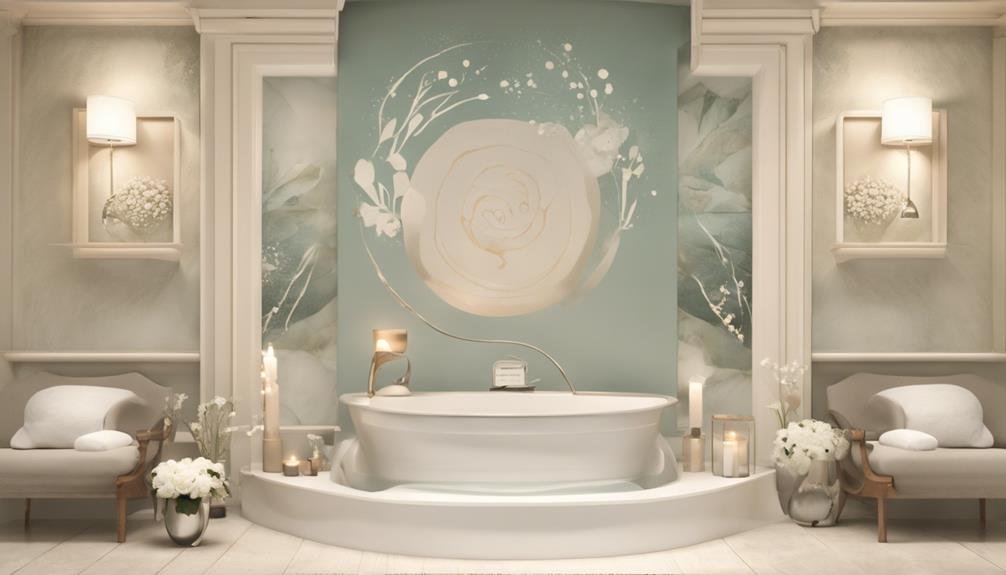
When designing a DIY spa gift certificate, it's like carefully selecting the perfect ingredients for a decadent spa treatment – each element plays a crucial role in creating a luxurious experience.
From elegant fonts to soothing colors, every choice contributes to the overall ambiance of relaxation and pampering.
As we explore the nuances of crafting the ideal spa gift certificate, you'll uncover invaluable tips to elevate your designs and leave a lasting impression on your recipients.
So, let's embark on this artistic journey together, where creativity meets tranquility.
Key Takeaways
- Opt for calming colors and elegant fonts to create a serene spa gift certificate.
- Include personalized text and a thoughtful message for a sophisticated touch.
- Use high-quality images of spa essentials and soothing pastel shades for a tranquil design.
- Enhance the presentation with high-quality paper, embellishments, and attention to detail.
Choosing the Right Design Elements
When selecting design elements for a spa gift certificate, opt for calming colors like blue or green to instill a sense of relaxation and serenity. These hues evoke a peaceful ambiance, perfect for setting the tone for a luxurious spa experience.
Consider incorporating images of spa essentials such as candles, flowers, or massage stones to enhance the visual appeal and create a serene atmosphere on the gift card.
To make the design truly stand out, include a unique logo that symbolizes tranquility and elegance, adding a touch of sophistication to the overall look.
Selecting Fonts and Colors

For a spa gift certificate that exudes tranquility and elegance, carefully selecting the fonts and colors is key. When it comes to designing a soothing gift certificate, here are some tips to help you create a truly serene experience:
- Fonts: Choose calming and elegant fonts like script or serif to evoke relaxation and sophistication.
- Colors: Opt for soothing pastel shades of blue, green, and lavender to create a tranquil atmosphere that promotes a sense of peace.
- Design: Consider using a minimalist design with plenty of white space to enhance the feeling of simplicity and serenity.
- Material: Use high-quality paper or card stock in soft textures to add a luxurious feel to the gift certificate, making it a tactile delight to receive.
Adding Personalized Text
To infuse a touch of heartfelt sentiment and individuality into a spa gift certificate, incorporating personalized text is like adding a brushstroke of personal connection and warmth. Imagine the recipient's delight upon seeing their name elegantly printed on the certificate, along with a thoughtful message tailored just for them.
Whether it's a simple 'Enjoy a day of pampering' or a more elaborate expression of gratitude, personalized text adds a layer of sincerity to the gift-giving experience. By including specific details about the spa services or products being gifted, you can show that this gift was chosen with care and consideration.
This customized message not only enhances the overall presentation of the certificate but also creates a lasting memory for the recipient. It's a small gesture that can make a big impact, fostering a deeper connection between the giver and the lucky recipient.
Incorporating Images and Graphics
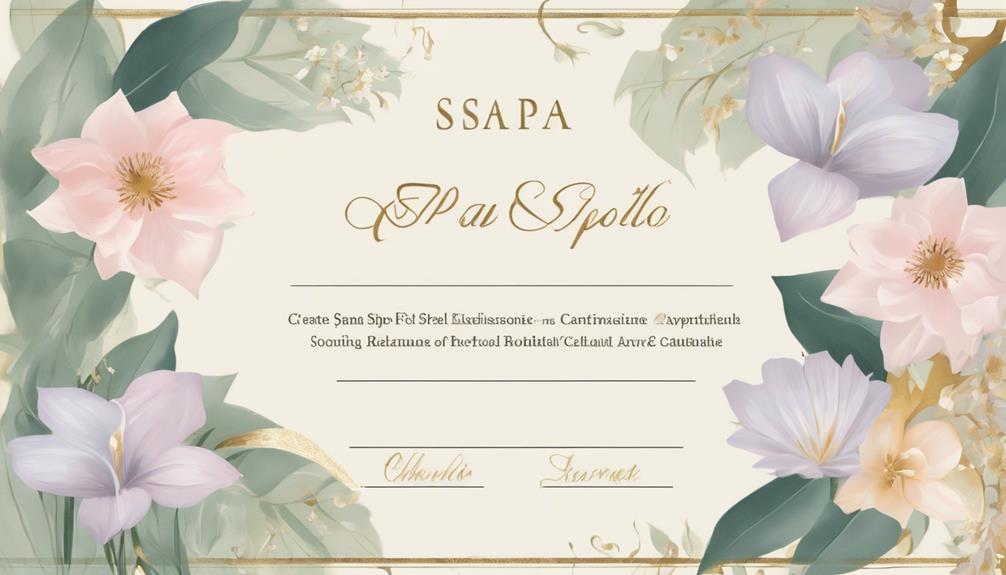
As we delve into the realm of design for spa gift certificates, let's explore the artistry of incorporating captivating images and graphics to evoke a sense of tranquility and luxury.
Utilize high-quality images of spa-related items like candles, flowers, or massage oils to enhance the visual appeal of the gift certificate.
Opt for soothing colors such as pastels or earth tones to create a relaxing and inviting design for the spa gift certificate.
Enhance the design with graphic elements like water droplets, bamboo, or spa symbols to convey a sense of tranquility and wellness.
Select elegant fonts that complement the overall spa theme and convey a sense of luxury and relaxation.
Printing and Presentation
Venture into the realm of printing and presentation, where the tactile elegance of high-quality paper and the artistry of embellishments elevate the spa gift certificate experience to a whole new level of luxury and sophistication. When it comes to creating a memorable impression, attention to detail is key. Opt for premium paper or cardstock that exudes luxury, and don't shy away from adding embellishments like delicate ribbons or elegant seals for that extra touch of sophistication. Ensure your design elements align with your spa's brand identity by maintaining a consistent color scheme and style.
Consider the following aspects as you craft your spa gift certificates:
| Aspect | Recommendation | Reason |
|---|---|---|
| Paper Quality | Use high-quality paper or cardstock for a luxurious feel | Enhances the overall perception of luxury |
| Embellishments | Consider adding embellishments like ribbons or seals | Elevates the visual appeal and adds a touch of elegance |
| Printing Professionalism | Utilize a professional printer for crisp results | Ensures clear and high-quality printing for a polished look |
Frequently Asked Questions
How Do I Create a Voucher Template?
We create voucher templates with ease using design software. Personalize with recipient's name, giver, amount, and expiration date. Enhance with spa-themed visuals, colors, fonts. Choose from templates for a pro look or craft a unique design. Save and share digitally or in print.
What Do You Write on a Spa Gift Voucher?
On a spa gift voucher, we include the spa's info, services covered, any limitations, recipient's name, a special message, and a unique code. It's a personal touch for a relaxing experience.
How to Design Gift Card?
We start by choosing a soothing color palette and incorporating spa elements. Essential details like recipient's name and gift amount are included. Elegant fonts and a personal message add a professional and thoughtful touch, making the design visually appealing.
What Should Be Written on a Gift Certificate?
We should ensure the recipient's name, giver's name, value, specific services, expiration date, and a heartfelt message are included on a gift certificate for a personal touch. This information enhances the experience and encourages timely use.
Conclusion
As we delve into the art of creating DIY spa gift certificates, we uncover the power of personalized design elements to enhance the overall experience for both businesses and customers.
By carefully selecting fonts, colors, text, images, and graphics, we can truly elevate the gift-giving experience and promote relaxation and wellness.
So, let your creativity flow and design a spa gift certificate that will leave a lasting impression on the recipient.
- About the Author
- Latest Posts
Introducing Ron, the home decor aficionado at ByRetreat, whose passion for creating beautiful and inviting spaces is at the heart of his work. With his deep knowledge of home decor and his innate sense of style, Ron brings a wealth of expertise and a keen eye for detail to the ByRetreat team.
Ron’s love for home decor goes beyond aesthetics; he understands that our surroundings play a significant role in our overall well-being and productivity. With this in mind, Ron is dedicated to transforming remote workspaces into havens of comfort, functionality, and beauty.
Spa Design
Transform Your Home Into a Spa Room: Design Ideas Galore
Nurture your senses with design tips to turn your home into a spa retreat, where relaxation awaits at every corner.
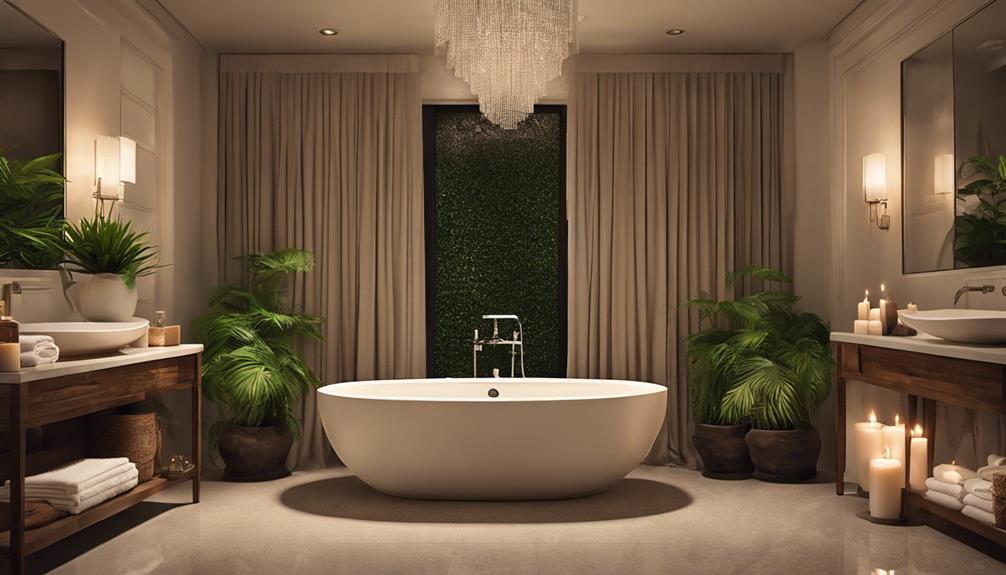
Imagine coming home after a long day, sinking into a plush chair, and feeling the tension melt away as soft music fills the room. There's a way to bring that serene spa experience right into your own home.
By carefully selecting calming colors, incorporating natural elements, and embracing minimalist design, you can create a tranquil oasis that beckons you to unwind.
Let's explore how simple changes in your living space can transform it into a personal sanctuary where relaxation and rejuvenation are just steps away.
Key Takeaways
- Choose calming colors and natural elements for a tranquil environment.
- Incorporate luxury features like rainfall showerheads and hot tubs for a spa-like experience.
- Focus on comfort and elegance with soft textures and durable furniture.
- Create a multi-sensory experience with scents, lighting, and ambient sounds for relaxation.
10 Ways to Transform Your Home
To create a serene sanctuary at home, we can easily transform our living spaces into tranquil spa rooms using a few simple design ideas. When designing our home with a spa-like ambiance in mind, incorporating calming colors like blues and greens can work wonders. These hues evoke a sense of relaxation and peace, essential for a spa-inspired environment.
Additionally, adding elements from nature, such as plants and natural textures, can enhance the overall tranquility of the space. The presence of greenery not only improves air quality but also brings a touch of the outdoors inside, promoting a sense of calm.
To further enhance the soothing atmosphere, utilizing scented candles or essential oils can create a multi-sensory experience, appealing to both sight and smell. Investing in soft textures like rugs and throw blankets adds comfort and warmth to the space, inviting us to unwind and de-stress after a long day.
6 Design Ideas for Spa-Like Bathrooms
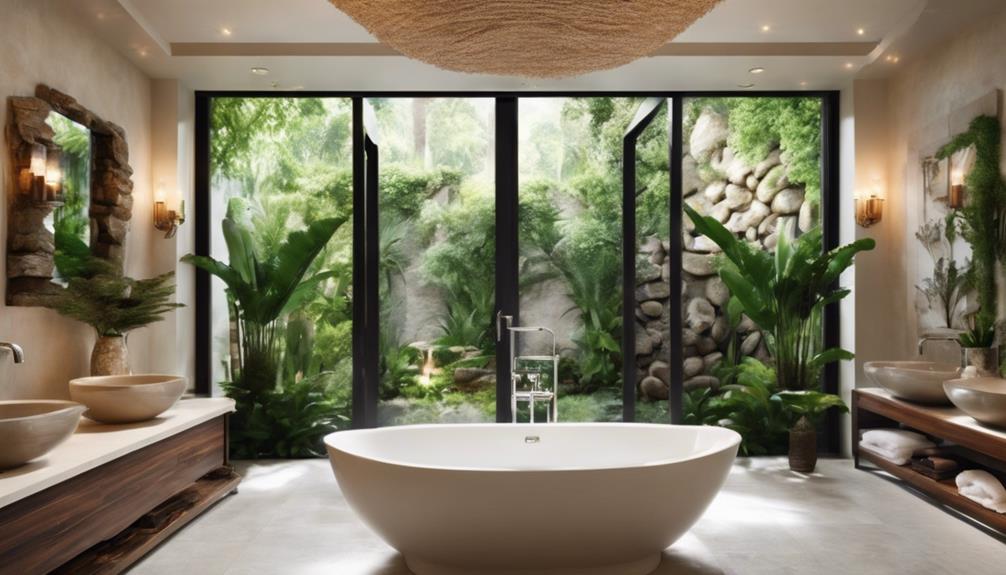
Elevate your bathroom into a luxurious spa retreat by incorporating natural elements like bamboo, stone, and plants for a serene ambiance. To achieve a spa-like atmosphere, consider installing a rainfall showerhead and multiple shower heads to create a luxurious shower experience.
When selecting a color scheme, opt for calming tones such as soft blues, greens, and neutrals to promote relaxation and tranquility in your spa-inspired bathroom. Enhance the spacious feel of the room by choosing large, light-colored tiles for the floors and walls.
To further elevate the luxury of your spa-like bathroom, include features like heated floors, freestanding tubs, and high-end fixtures. These design ideas will transform your bathroom into a sanctuary within your luxury home, where you can enjoy the ultimate spa treatment in the comfort of your own space.
Garden Spa Ideas
Transform your outdoor space into a serene oasis with innovative Garden Spa Ideas that combine relaxation and rejuvenation seamlessly. When designing a garden spa, consider incorporating elements such as greenery, outdoor entertainment features, ambient lighting, and hot tubs to create a tranquil retreat right in your backyard.
To enhance the ambiance of your garden spa, strategically place outdoor speakers and ambient lighting to create a calming atmosphere. Durable and weather-resistant furniture will ensure that your outdoor space remains stylish and functional throughout the seasons. Including hot tubs or saunas can elevate the spa experience, providing a luxurious way to unwind and de-stress.
Regular maintenance, cleaning, and winterization of your garden spa structures are essential to ensure their longevity and optimal performance. Additionally, adding privacy features such as tall plants or screens can enhance the sense of seclusion and relaxation in your garden spa oasis. By carefully curating these elements, you can transform your outdoor space into a rejuvenating haven for both relaxation and entertainment.
10 Master Bathroom Design Ideas
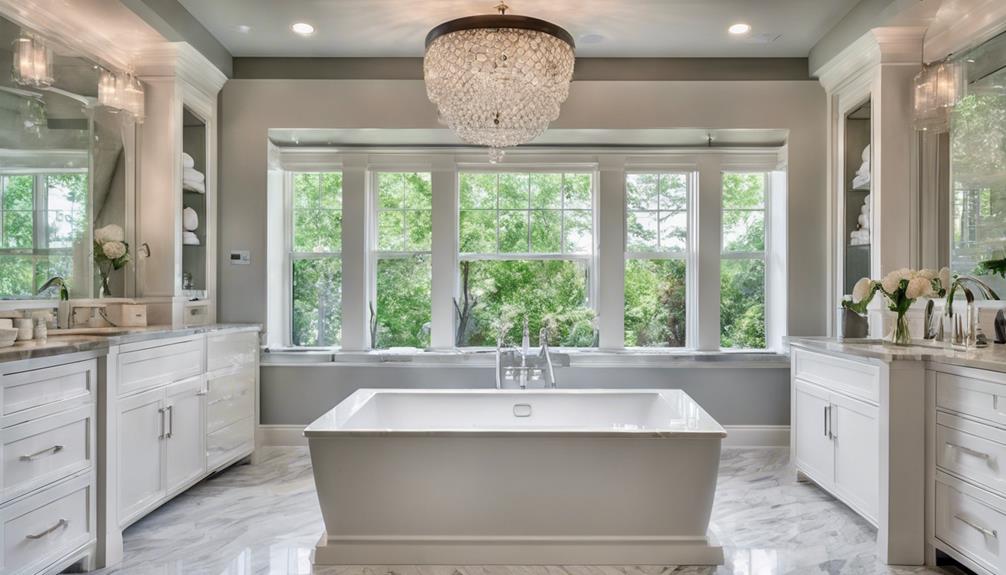
Crafting a luxurious oasis in your master bathroom involves meticulous attention to detail, from selecting elegant finishes to incorporating spa-like features for ultimate relaxation. When considering design ideas for your master bathroom, here are three key elements to focus on:
- Budget-Friendly Splurges: Make the most of your budget by splurging on key elements like a luxurious rainfall showerhead or elegant fixtures while finding creative ways to reuse existing features to save costs.
- Personalized Touches: Create a space that reflects your style by choosing a cohesive color palette, timeless finishes, and unique design elements such as mosaic tiles or a statement bathtub to make your master bathroom truly personalized.
- Spa-Like Enhancements: Enhance your spa experience at home by incorporating features like jets in the shower for a massage-like experience, ambient lighting options for relaxation, and soothing scents to elevate the overall ambiance of your master bathroom.
Creating a Spa-Like Ambience
To infuse your master bathroom with a spa-like ambience, consider incorporating elements of nature and calming colors to promote relaxation and tranquility. A simple design approach can transform your space into a sanctuary for body and soul. Utilize blues and greens in your color palette to evoke a sense of serenity. Enhance the atmosphere with scents and sounds that soothe the senses, such as scented candles or essential oils for a therapeutic experience. To elevate the spa-like feel, introduce soft textures like plush rugs and cozy throw blankets for added comfort. Additionally, incorporating calming music or nature sounds in the background can help you unwind every day in your personal oasis.
| Elements of Nature | Calming Colors |
|---|---|
| Plants and Greenery | Blues |
| Natural Light | Greens |
| Wooden Accents | Soft Neutrals |
| Water Features | Earthy Tones |
Frequently Asked Questions
How Can I Make My Living Room Look Like a Spa?
To make your living room look like a spa, we incorporate calming colors, natural elements, comfortable seating, soft textures, and dimmable lighting. By combining these elements, we can create a serene and tranquil atmosphere that evokes the feeling of a spa retreat.
How Do I Set up a Spa Room in My House?
We set up a spa room by choosing a dedicated area, using calming colors, soft textiles, natural elements, and soothing scents. Incorporate plants, water features, plush towels, robes, and candles to create a tranquil oasis at home.
How Do You Create a Spa Environment at Home?
To create a spa environment at home, we incorporate calming colors, scented candles, soft textures, soothing music, and elements of nature. These details transform our space into a serene sanctuary perfect for unwinding and relaxation.
How Do I Turn My Room Into a Spa?
Let's turn our room into a spa oasis! Use calming colors, nature elements, scented candles, and soft textures. Add soothing music. Transform your space into a tranquil retreat for relaxation and rejuvenation.
Conclusion
As we soak in the luxurious ambiance of our transformed home spa, we find ourselves immersed in a world of serenity and tranquility. The gentle flicker of candlelight, the soothing scents of lavender and rose water, and the soft embrace of plush linens all come together to create a haven of relaxation.
Let's bask in the blissful escape we've crafted, where every corner whispers of rejuvenation and well-being. Transforming our home into a spa room has truly been a divine coincidence.
- About the Author
- Latest Posts
Introducing Ron, the home decor aficionado at ByRetreat, whose passion for creating beautiful and inviting spaces is at the heart of his work. With his deep knowledge of home decor and his innate sense of style, Ron brings a wealth of expertise and a keen eye for detail to the ByRetreat team.
Ron’s love for home decor goes beyond aesthetics; he understands that our surroundings play a significant role in our overall well-being and productivity. With this in mind, Ron is dedicated to transforming remote workspaces into havens of comfort, functionality, and beauty.
Retreat Ideas
Empowering Women: Ministry Retreat Ideas for Inspiration
Mingle with empowered women and discover transformative ministry retreat ideas that inspire personal growth – a journey worth experiencing.

They say, 'Empowered women empower women.'
At our ministry retreats, we endeavor to create a space where women can not only grow spiritually but also develop as leaders and discover their true selves.
With a mix of engaging workshops, unique themes, and community-building activities, our retreats are designed to spark inspiration and foster personal growth.
Join us as we explore new ways to empower women and support each other on this transformative journey towards empowerment and self-discovery.
Key Takeaways
- Cultivate spiritual growth through themed reflections and activities
- Engage in creative workshops for self-exploration and empowerment
- Connect with nature through outdoor adventures for personal resilience
- Strengthen bonds and trust within the community for lasting inspiration
Unique Retreat Themes
When crafting unique retreat themes for women's ministry gatherings, we aim to inspire spiritual growth and foster deep connections with God through intentional and meaningful frameworks. Empowering women through our retreat themes is at the core of our mission. These unique themes, such as 'Unshakable Faith' and 'Abiding in Christ', are carefully selected to create a space for personal reflection and exploration of faith. By offering cohesive and engaging activities within these themes, we cater to participant needs while aligning with the desired outcomes of our retreats.
Our focus on connection with God is evident in themes like 'Fearless and Free' and 'The Power of Prayer'. These themes not only encourage spiritual growth but also provide a roadmap for participants to deepen their relationship with God. Through these carefully curated themes, we aim to create a supportive environment where women can find inspiration, guidance, and a sense of community in their spiritual journey.
Engaging Workshop Activities

In our pursuit to cultivate spiritual growth and foster deep connections with God, we implement engaging workshop activities that cater to various aspects of personal development and well-being. Our workshops are carefully designed to provide opportunities for creative expression, writing for healing and self-discovery, mindfulness practices, meditation for stress reduction, goal-setting exercises, and empowerment sessions. Each activity is crafted to guide participants on a journey of self-exploration and growth.
| Workshop Activities | Description | Benefits |
|---|---|---|
| Creative Expression | Engage in artistic endeavors for self-discovery | Enhances creativity and emotional release |
| Mindfulness | Practice being fully present in the moment | Reduces stress and fosters inner peace |
| Goal-Setting | Learn to set and achieve meaningful goals | Empowers individuals to reach their potential |
These activities blend seamlessly to create a holistic approach to personal development, ensuring that each participant can find avenues for growth and transformation.
Outdoor Adventure Experiences
Let's embark on invigorating outdoor adventures that push boundaries and nurture our spirits. Women's retreats offer a variety of outdoor activities such as hiking, camping, rock climbing, and zip-lining, creating opportunities for personal growth and resilience.
Through these challenges, participants can connect with nature, fostering a sense of accomplishment and teamwork. Engaging in these outdoor experiences provides a platform for self-discovery and overcoming fears in a supportive environment.
The connection to nature can be transformative, strengthening relationships and building confidence among participants. These adventures not only offer physical challenges but also serve as a catalyst for mental and emotional growth.
Women engaging in these activities can expect to push themselves beyond their comfort zones, developing a deeper understanding of their capabilities. Outdoor adventure experiences in women's retreats are designed to empower, inspire, and create lasting memories of triumph and camaraderie.
Spiritual Growth Workshops

Embarking on spiritual growth workshops allows us to deepen our connection with God, fostering resilience and unwavering faith in a supportive environment. These workshops are designed to enhance our relationship with God through various activities such as Bible studies, prayer sessions, and reflective exercises. By engaging in these practices, we can cultivate resilience and trust in God, leading to unwavering faith even in challenging times.
Through personal introspection and dedicated participation in these workshops, we can experience significant growth in our faith. The teachings and practices offered in these workshops aim to guide us towards spiritual maturity and a deeper understanding of our beliefs. As we explore the scriptures, spend time in prayer, and reflect on our spiritual journey, we open ourselves up to transformative experiences that strengthen our bond with God.
Community Building Exercises
As we engage in community building exercises, we strengthen connections and trust within our group, fostering teamwork and empathy among participants. These exercises, which often include icebreakers, group discussions, and team challenges, serve as powerful tools to promote communication and understanding.
By actively participating in these activities, we create a supportive environment where every individual feels valued and heard. Through team challenges, we learn to collaborate effectively, pooling our strengths to overcome obstacles and achieve common goals. Group discussions encourage open dialogue, allowing us to share our perspectives and experiences, hence deepening our empathy for one another.
Trust is nurtured as we work together, facing challenges and celebrating successes as a united front. Ultimately, these community building exercises not only enhance the retreat experience but also leave a lasting impact by strengthening the bonds that tie us together.
Frequently Asked Questions
What Are the Spiritual Themes for Women's Ministry?
We explore spiritual themes for women's ministry to deepen faith and connection with God. Common themes like Unshakable Faith and The Power of Prayer empower and inspire trust in God's plan, fostering resilience and growth.
What Do You Do at a Women Retreat?
We gather to grow – in worship, study, and fellowship. Engage in workshops, discussions, and reflection. Connect, heal, and lead. Themes of empowerment, identity, and intimacy guide us. At a women's retreat, we thrive together.
How Do I Make My Ladies Ministry Successful?
To make our ladies ministry successful, we focus on building personal connections, leveraging volunteers' skills, aligning with the church's vision, offering mentorship programs for growth, and empowering women through leadership workshops that boost confidence and goal-setting abilities.
What Is a Good Theme for a Women's Conference?
We believe a transformative theme for a women's conference is "Courageous Hearts." It inspires bravery, vulnerability, and community. With impactful speakers, interactive workshops, and meaningful connections, we cultivate a safe space for women to embrace their fears and step into their power.
Conclusion
As we wrap up our empowering women ministry retreat, we can't help but wonder what new heights will we reach with our unshakable faith and fearless spirits.
Let's continue to support each other, grow together, and embrace our unique callings.
This journey isn't over – it's just the beginning of something truly remarkable.
Let's keep building each other up and shining brightly in this world.
Together, we're unstoppable.
- About the Author
- Latest Posts
Introducing Ron, the home decor aficionado at ByRetreat, whose passion for creating beautiful and inviting spaces is at the heart of his work. With his deep knowledge of home decor and his innate sense of style, Ron brings a wealth of expertise and a keen eye for detail to the ByRetreat team.
Ron’s love for home decor goes beyond aesthetics; he understands that our surroundings play a significant role in our overall well-being and productivity. With this in mind, Ron is dedicated to transforming remote workspaces into havens of comfort, functionality, and beauty.
-
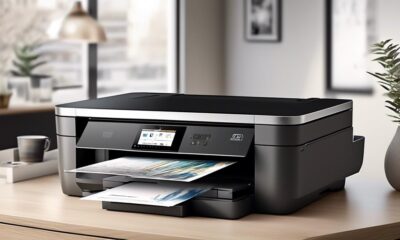
 Vetted9 mins ago
Vetted9 mins ago15 Best Printers of 2024: Top Picks and Expert Reviews
-
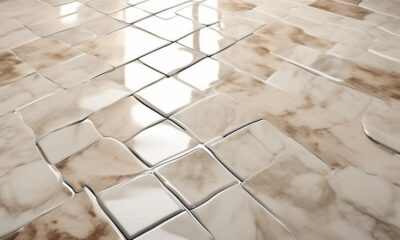
 Vetted2 days ago
Vetted2 days ago15 Best Tile Sealers for Long-Lasting Protection and Shine
-

 Vetted1 week ago
Vetted1 week ago15 Best Smelling Floor Cleaners That Will Leave Your Home Fresh and Inviting
-
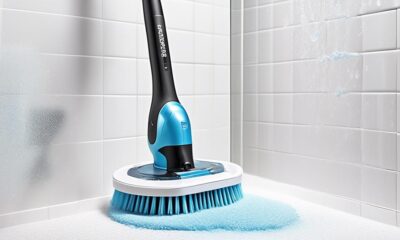
 Vetted4 days ago
Vetted4 days ago14 Best Power Scrubbers for Showers That Will Transform Your Cleaning Routine
-
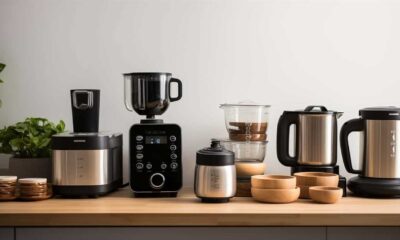
 Appliances2 days ago
Appliances2 days ago5 Best Energy-Efficient Stainless Steel Fridges 2023
-
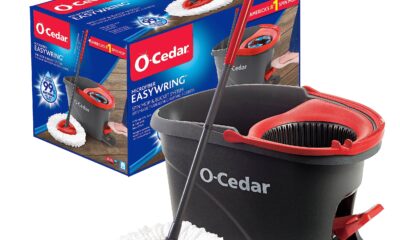
 Vetted3 weeks ago
Vetted3 weeks agoBest Mop for Sparkling Clean Floors in 2024
-
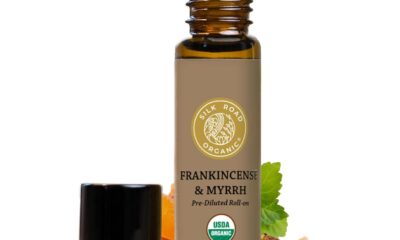
 Vetted2 days ago
Vetted2 days agoBest Essential Oil Brand: Top Picks for 2024
-
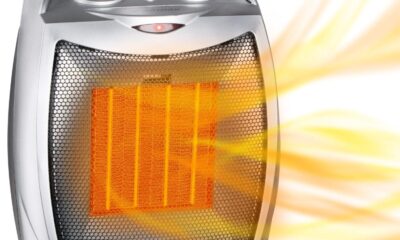
 Vetted1 week ago
Vetted1 week agoBest Space Heater for Your Home in 2024






















